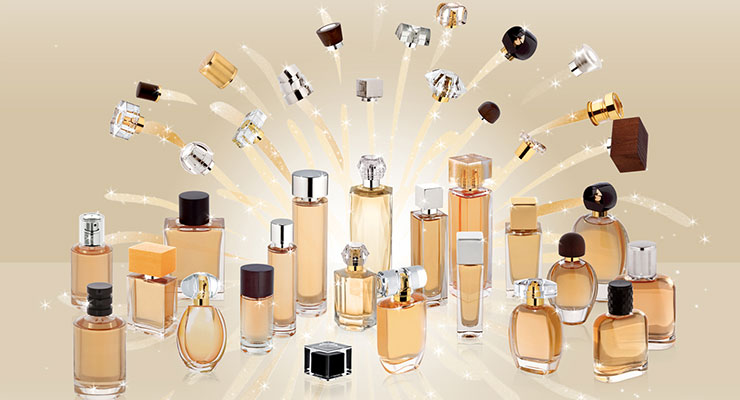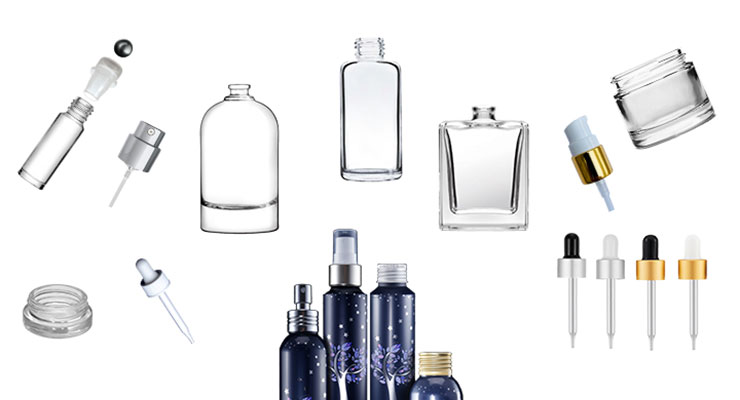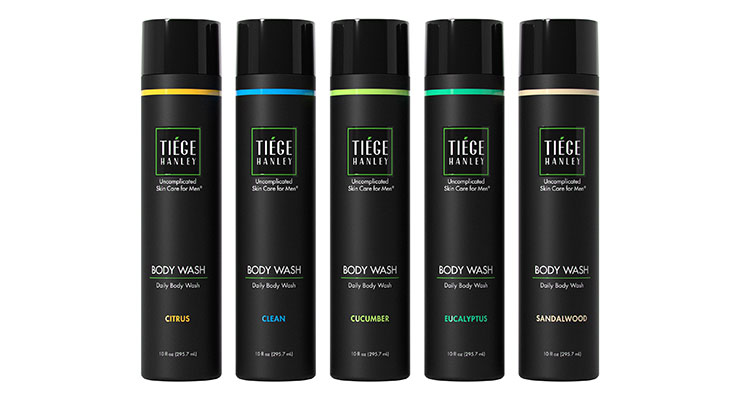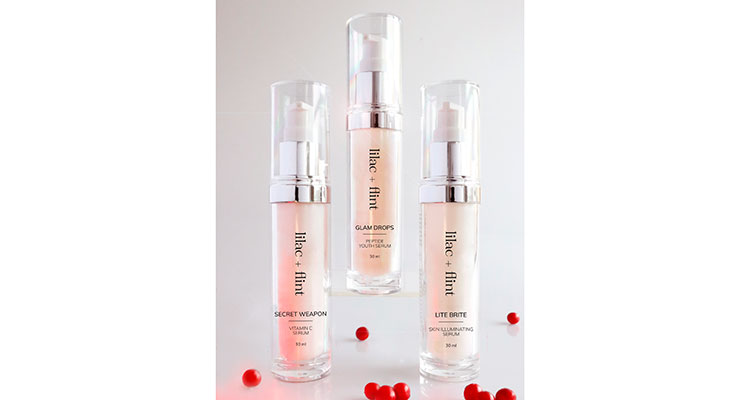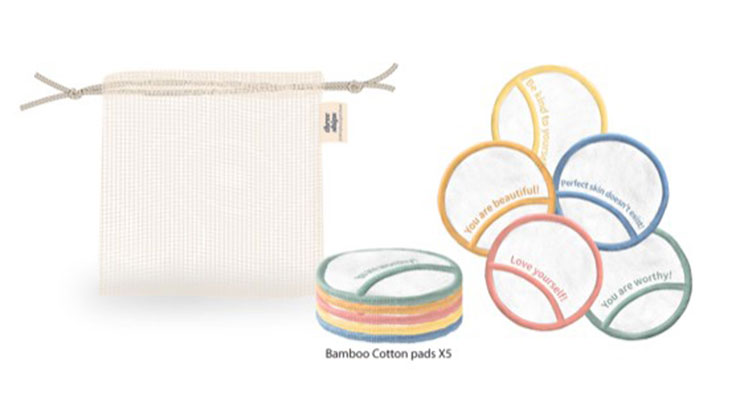Joanna Cosgrove, Contributing Editor10.25.21
In the high stakes, ultra-competitive beauty industry, the cost of beautifully bespoke packaging can be a significant barrier to entry, but it doesn’t have to be thanks to easily customizable, low minimum order quantity (MOQ) packaging. With built-in flexibility and speed to market, at-the-ready, low MOQ packaging and componentry are advantageous for both new launches from emerging/independent brands and seasonal or limited-edition offerings from established, global brands. It’s also a viable option for brands mounting a cost-effective, post-pandemic comeback.
“Beauty and personal care is a fast-changing industry with new products designed to meet the needs of a changing consumer base,” says Vali Braselton, marketing manager of Berry Global’s Consumer Packaging North America division. “Both established global brands and emerging brands must have packaging solutions that help them nimbly address this dynamic marketplace, and the cost-effective low MOQ packaging model is absolutely essential to achieve this.”
Michael Warford, director of business development at ABA Packaging Corp., believes low MOQ options are an especially valuable proposition for fledgling brands that aren’t in a position to invest in a budget-busting amount of componentry right out of the gate. “Established, global brands didn’t start their businesses by buying truckloads of packaging components, they were once emerging brands too, and low-MOQs with affordable price-points for primary packaging components contributed to their successes,” he explains.
ABA Packaging is especially sensitive to the needs of startups, and Warford says the company understands that startup brands need more support due to a lack of expertise. “We maintain large shelf-stock inventories of packaging components that are critical for these new brands. To complement our offerings, we can provide custom decorating at low MOQs including screen and hot-stamp printing, spray color and frost coatings, and custom label manufacturing and applications,” says Warford. “We can provide the whole package in very low quantities to the startup brands including bottles, pumps, droppers, jars, caps, rollerballs, sampling vials and much more, [while giving] good guidance and referrals in the areas of package testing, regulatory and engineering.”
And at a time when the pandemic and natural disasters continue to create severe packaging supply chain disruptions, low MOQ packaging and componentry can be a valuable way to fill unexpected voids. Suppliers like ABA maintain stock inventories of glass, plastic and metal packaging components, which Warford describes as a “lifeline” to companies who find themselves left in the lurch by cancelled or delayed shipments. “This is especially the case for smaller customers that don’t have the leverage to move the mountains that the larger players do with suppliers and logistics companies,” he says.
These suppliers also have the practicality of helping with inventory management. “When a smaller MOQ is available, the customer can maintain a lower level of SKUs in inventory, [facilitating] warehouse management,” says Gilda Mirra Cutri, vice president of operations and business development at Coverpla Inc. “Also, the initial investment in the product will be more affordable, as will the storage costs.”
Eco-Friendly Options
Brands hoping to take advantage of low MOQs don’t have to compromise their commitments to cleaner, greener packaging, as suppliers are flush with a proliferation of environmentally conscious options.
ABA is a big proponent of aluminum bottles, cans, jar packages and caps because, according to Warford, aluminum is one of the most sought-after materials for recycling in primary packaging. “It is clearly a good eco choice these days,” he says. “Probably four out of every five inquiries that we receive currently is for an aluminum package or component.”
ABA offers highly decorated aluminum bottles, cans and jar packages in most designs in quantities as low as 10,000 pieces, with some aluminum caps available in even lower MOQs.
At New High Glass, glass packaging that’s produced to order often bears MOQs between 50,000-100,000 but the company’s Dave Desai, vice president of sales and marketing, says launch quantities run well under 50,000. “We have found, even with large brands, that having a variety of high-quality glass containers in stock in the U.S. that can be customized locally has empowered our customers in two ways,” he says. “They can bring premium products to market quickly, and they are ensured a stable supply-chain as their sales grow.”
New High Glass recently launched the Lassen line of aluminum Fine Mist sprayers, which allow fragrance customers to select from any of the company’s in-stock bottles and deliver an environmentally friendly perfumery product. Available in silver or gold colorations, the Lassen sprayers screw onto fragrance vessels and are easier to remove than traditional crimp-on options. “The difference is that the traditional crimp-on sprayers cannot be removed so the bottles inevitably end up in the ocean or landfill,” Desai says.
Lassen Fine Mist sprayers bear a finish size of 18/415 with a dip tube length of 180mm UG and deliver a dose of 0.15ml.
Navigating Limitations
But despite all of the benefits of low MOQ packaging, it’s not without its limitations.
ABA Packaging’s Warford says that it’s normal for startups and entrepreneurs to experience frustration in trying to get reasonably priced, high-quality primary packaging components in small quantities. “It is a fact of life that high quantity purchases generally yield better service and lower pricing,” he says, adding that ABA has worked to purchase its shelf-stock packaging products in volume, and are thus able to pass some of those savings on to its small customers in search of reasonably priced packaging components.
“With an active shelf-stock inventory of over one-million dollars of quality glass bottles and jars, caps, pumps, droppers, roll-ons and sampling vials in our Long Island warehouse, we can respond quickly and economically in fulfilling the packaging needs of the emerging brands,” he says. “To complement these products, we offer decorating services that in many cases are available with very low minimums.”
Scalability can be another limitation. “Traditionally, the low MOQ plants offered limited scalability and, once brands grew to a certain size, they were forced into changing suppliers because the smaller machine sizes needed to effectively service the low MOQ model just weren’t able to accommodate growing unit requirements once the brand grew to a national retail scale,” says Berry Global’s Braselton.
Berry has circumvented the issue by integrating its Winchester, VA, manufacturing site into the Berry product offerings to solve the traditional limitation of the model. “With a global collection of Berry manufacturing plants that are ideally suited to handle large product lines, any new or emerging brand can feel confident that we can service their needs even after they no longer need a low MOQ solution model,” she says, noting that the Winchester plant is purposely designed to serve new and emerging brands with a low MOQ model.
The equally skilled production team at Berry’s Anaheim, CA, facility recently produced 300ml screen-printed bottles for Tiege Hanley LLC Men’s new five-formula Body Wash line with an initial run requirement of 18,000 per SKU. “We were able to group the products into a larger run of 90,000 to help them get the initial supply to market in a timely manner,” Braselton says. “The HDPE bottles are silk-screened with 4 colors [and] they are made with 96% PCR and include a detectable non-carbon black colorant which allows the bottles to be sorted by optical scanners at recycling facilities.”
Coverpla Inc. has also made its low MOQ packaging more accessible by keeping an inventory hub in New Jersey to maintain lower MOQs and foster fast turnaround time. This translates into components which typically have a 20+ week lead time and high MOQs now being available in one week at lower MOQs. The company offers an extensive array of stock components for fragrance and skin care packaging ranging from glass bottles/jars, caps in Surlyn, wood, metal, Zamac, magnetized and pumps, as well as eco-friendly components.
A Canvas for Creativity
Low MOQ packaging is a perfectly primed, blank canvas for brands to express their creativity, making it anything but basic. Cyndi Mathews, vice president of sales, Cosmetic Packaging Resources, says that while low MOQ packaging can sometimes look like other products that are already established in the marketplace, “The upside is that [it] can have that larger branded/professional look by adding customization such as decorating the packaging or applying the perfect closure.”
All packaging offerings at Cosmetic Packaging Resources are low MOQ. Mathews says the MOQ for in-stock pieces is just 12, while some of its custom-made packaging averages 3,000 pieces. “We now offer in-house direct to container printing to help these brands complete their look,” she says. We have several different types of machines that allow us to print small quantities as well as very large quantities and be efficient.”
Indie skincare brand Lilac + Flint sought the help of Cosmetic Packaging Resources to supply packaging for its Skin Serums. The company ultimately chose 30ml PMMA treatment bottles that feature polypropylene inner bottles.
Lindsay Flint, licensed esthetician and founder of Lilac + Flint, refers to her company as “small but mighty” because it offers the type of “high-quality, creative, personal touch associated with small businesses, while also maintaining a level of luxury competitive with the beauty mega-brands.”
But as she started to research how to bring her vision to life, she was disappointed to find that most packaging companies required minimum orders of 10,000+ pieces. “As a business offering 40 SKUs across a mixture of bottles and jars, this was not feasible for many reasons,” she recalls. “As a mom of two young kids working out of my garage, I didn’t have that kind of startup funding, nor did I have the storage space to house all I would need to get started.”
Enter Cosmetic Packaging Resources. “With access to low MOQ orders (as low as 12 pieces!), I was able to bring my entire product line to life in a very short amount of time, and I could fund it outright instead of needing business loans,” she says. “What CPR offers small companies like mine is a level playing field and the opportunity to start something I otherwise could not have gotten off the ground. They have grown with me every step of the way, offering me real support, and becoming an indispensable part of my business.
Now into her third year at the helm of Lilac + Flint, Flint’s needs have grown, and she says CPR has grown right along with her, earning a loyal customer. “They understand me and my needs, and I’m grateful for the start they provided me,” she comments.
“For Indie brands, [low MOQ packaging] is a great opportunity to showcase their brand in a highly customized way,” says Gina Panella, lead production manager at Pop NYC, a full-service product and creative development company that specializes in gift-with-purchase (GWP), private label and marketing items. “While we can always print on stock items for super-fast turnaround times, our low MOQs allow brands to stand out by customizing items exactly as they want to showcase their story.”
Pop NYC accepts MOQs as low as 500 units (and lower for established brands they’ve previously worked with) while still providing full customization. As a “100% eco-friendly” company that only provides “options that are good for the Earth,” the company recently used its expertise to aid in a collaboration between beauty brand Three Ships and a beauty influencer to create a series of 5,000 reusable bamboo face round sets. Pop NYC fulfilled everything from the bag to the PMS matched embroidery and imprint on each bamboo round, plus custom hang tags and labeling to deliver a perfectly coordinated look.
“Beauty and personal care is a fast-changing industry with new products designed to meet the needs of a changing consumer base,” says Vali Braselton, marketing manager of Berry Global’s Consumer Packaging North America division. “Both established global brands and emerging brands must have packaging solutions that help them nimbly address this dynamic marketplace, and the cost-effective low MOQ packaging model is absolutely essential to achieve this.”
Michael Warford, director of business development at ABA Packaging Corp., believes low MOQ options are an especially valuable proposition for fledgling brands that aren’t in a position to invest in a budget-busting amount of componentry right out of the gate. “Established, global brands didn’t start their businesses by buying truckloads of packaging components, they were once emerging brands too, and low-MOQs with affordable price-points for primary packaging components contributed to their successes,” he explains.
ABA Packaging is especially sensitive to the needs of startups, and Warford says the company understands that startup brands need more support due to a lack of expertise. “We maintain large shelf-stock inventories of packaging components that are critical for these new brands. To complement our offerings, we can provide custom decorating at low MOQs including screen and hot-stamp printing, spray color and frost coatings, and custom label manufacturing and applications,” says Warford. “We can provide the whole package in very low quantities to the startup brands including bottles, pumps, droppers, jars, caps, rollerballs, sampling vials and much more, [while giving] good guidance and referrals in the areas of package testing, regulatory and engineering.”
And at a time when the pandemic and natural disasters continue to create severe packaging supply chain disruptions, low MOQ packaging and componentry can be a valuable way to fill unexpected voids. Suppliers like ABA maintain stock inventories of glass, plastic and metal packaging components, which Warford describes as a “lifeline” to companies who find themselves left in the lurch by cancelled or delayed shipments. “This is especially the case for smaller customers that don’t have the leverage to move the mountains that the larger players do with suppliers and logistics companies,” he says.
These suppliers also have the practicality of helping with inventory management. “When a smaller MOQ is available, the customer can maintain a lower level of SKUs in inventory, [facilitating] warehouse management,” says Gilda Mirra Cutri, vice president of operations and business development at Coverpla Inc. “Also, the initial investment in the product will be more affordable, as will the storage costs.”
Eco-Friendly Options
Brands hoping to take advantage of low MOQs don’t have to compromise their commitments to cleaner, greener packaging, as suppliers are flush with a proliferation of environmentally conscious options.
ABA is a big proponent of aluminum bottles, cans, jar packages and caps because, according to Warford, aluminum is one of the most sought-after materials for recycling in primary packaging. “It is clearly a good eco choice these days,” he says. “Probably four out of every five inquiries that we receive currently is for an aluminum package or component.”
ABA offers highly decorated aluminum bottles, cans and jar packages in most designs in quantities as low as 10,000 pieces, with some aluminum caps available in even lower MOQs.
At New High Glass, glass packaging that’s produced to order often bears MOQs between 50,000-100,000 but the company’s Dave Desai, vice president of sales and marketing, says launch quantities run well under 50,000. “We have found, even with large brands, that having a variety of high-quality glass containers in stock in the U.S. that can be customized locally has empowered our customers in two ways,” he says. “They can bring premium products to market quickly, and they are ensured a stable supply-chain as their sales grow.”
New High Glass recently launched the Lassen line of aluminum Fine Mist sprayers, which allow fragrance customers to select from any of the company’s in-stock bottles and deliver an environmentally friendly perfumery product. Available in silver or gold colorations, the Lassen sprayers screw onto fragrance vessels and are easier to remove than traditional crimp-on options. “The difference is that the traditional crimp-on sprayers cannot be removed so the bottles inevitably end up in the ocean or landfill,” Desai says.
Lassen Fine Mist sprayers bear a finish size of 18/415 with a dip tube length of 180mm UG and deliver a dose of 0.15ml.
Navigating Limitations
But despite all of the benefits of low MOQ packaging, it’s not without its limitations.
ABA Packaging’s Warford says that it’s normal for startups and entrepreneurs to experience frustration in trying to get reasonably priced, high-quality primary packaging components in small quantities. “It is a fact of life that high quantity purchases generally yield better service and lower pricing,” he says, adding that ABA has worked to purchase its shelf-stock packaging products in volume, and are thus able to pass some of those savings on to its small customers in search of reasonably priced packaging components.
“With an active shelf-stock inventory of over one-million dollars of quality glass bottles and jars, caps, pumps, droppers, roll-ons and sampling vials in our Long Island warehouse, we can respond quickly and economically in fulfilling the packaging needs of the emerging brands,” he says. “To complement these products, we offer decorating services that in many cases are available with very low minimums.”
Scalability can be another limitation. “Traditionally, the low MOQ plants offered limited scalability and, once brands grew to a certain size, they were forced into changing suppliers because the smaller machine sizes needed to effectively service the low MOQ model just weren’t able to accommodate growing unit requirements once the brand grew to a national retail scale,” says Berry Global’s Braselton.
Berry has circumvented the issue by integrating its Winchester, VA, manufacturing site into the Berry product offerings to solve the traditional limitation of the model. “With a global collection of Berry manufacturing plants that are ideally suited to handle large product lines, any new or emerging brand can feel confident that we can service their needs even after they no longer need a low MOQ solution model,” she says, noting that the Winchester plant is purposely designed to serve new and emerging brands with a low MOQ model.
The equally skilled production team at Berry’s Anaheim, CA, facility recently produced 300ml screen-printed bottles for Tiege Hanley LLC Men’s new five-formula Body Wash line with an initial run requirement of 18,000 per SKU. “We were able to group the products into a larger run of 90,000 to help them get the initial supply to market in a timely manner,” Braselton says. “The HDPE bottles are silk-screened with 4 colors [and] they are made with 96% PCR and include a detectable non-carbon black colorant which allows the bottles to be sorted by optical scanners at recycling facilities.”
Coverpla Inc. has also made its low MOQ packaging more accessible by keeping an inventory hub in New Jersey to maintain lower MOQs and foster fast turnaround time. This translates into components which typically have a 20+ week lead time and high MOQs now being available in one week at lower MOQs. The company offers an extensive array of stock components for fragrance and skin care packaging ranging from glass bottles/jars, caps in Surlyn, wood, metal, Zamac, magnetized and pumps, as well as eco-friendly components.
A Canvas for Creativity
Low MOQ packaging is a perfectly primed, blank canvas for brands to express their creativity, making it anything but basic. Cyndi Mathews, vice president of sales, Cosmetic Packaging Resources, says that while low MOQ packaging can sometimes look like other products that are already established in the marketplace, “The upside is that [it] can have that larger branded/professional look by adding customization such as decorating the packaging or applying the perfect closure.”
All packaging offerings at Cosmetic Packaging Resources are low MOQ. Mathews says the MOQ for in-stock pieces is just 12, while some of its custom-made packaging averages 3,000 pieces. “We now offer in-house direct to container printing to help these brands complete their look,” she says. We have several different types of machines that allow us to print small quantities as well as very large quantities and be efficient.”
Indie skincare brand Lilac + Flint sought the help of Cosmetic Packaging Resources to supply packaging for its Skin Serums. The company ultimately chose 30ml PMMA treatment bottles that feature polypropylene inner bottles.
Lindsay Flint, licensed esthetician and founder of Lilac + Flint, refers to her company as “small but mighty” because it offers the type of “high-quality, creative, personal touch associated with small businesses, while also maintaining a level of luxury competitive with the beauty mega-brands.”
But as she started to research how to bring her vision to life, she was disappointed to find that most packaging companies required minimum orders of 10,000+ pieces. “As a business offering 40 SKUs across a mixture of bottles and jars, this was not feasible for many reasons,” she recalls. “As a mom of two young kids working out of my garage, I didn’t have that kind of startup funding, nor did I have the storage space to house all I would need to get started.”
Enter Cosmetic Packaging Resources. “With access to low MOQ orders (as low as 12 pieces!), I was able to bring my entire product line to life in a very short amount of time, and I could fund it outright instead of needing business loans,” she says. “What CPR offers small companies like mine is a level playing field and the opportunity to start something I otherwise could not have gotten off the ground. They have grown with me every step of the way, offering me real support, and becoming an indispensable part of my business.
Now into her third year at the helm of Lilac + Flint, Flint’s needs have grown, and she says CPR has grown right along with her, earning a loyal customer. “They understand me and my needs, and I’m grateful for the start they provided me,” she comments.
“For Indie brands, [low MOQ packaging] is a great opportunity to showcase their brand in a highly customized way,” says Gina Panella, lead production manager at Pop NYC, a full-service product and creative development company that specializes in gift-with-purchase (GWP), private label and marketing items. “While we can always print on stock items for super-fast turnaround times, our low MOQs allow brands to stand out by customizing items exactly as they want to showcase their story.”
Pop NYC accepts MOQs as low as 500 units (and lower for established brands they’ve previously worked with) while still providing full customization. As a “100% eco-friendly” company that only provides “options that are good for the Earth,” the company recently used its expertise to aid in a collaboration between beauty brand Three Ships and a beauty influencer to create a series of 5,000 reusable bamboo face round sets. Pop NYC fulfilled everything from the bag to the PMS matched embroidery and imprint on each bamboo round, plus custom hang tags and labeling to deliver a perfectly coordinated look.

